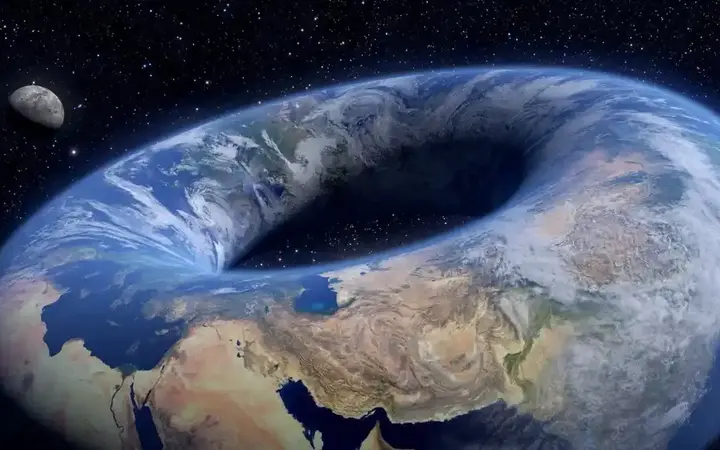Extremely large telescopes: the next big thing in astronomy
Telescopes have long served as human windows to the universe, changing the understanding of the universe and expanding the boundaries of human knowledge. From Galileo's first primitive telescope to the wonders of modern observatories, these instruments have allowed observations of distant stars, galaxies and even planets outside the solar system. However, humanity's quest to understand the universe increasingly required powerful telescopes, which led to the development of extremely large telescopes (ELTs). These huge instruments are set to revolutionize astronomy, providing unparalleled insights into the origins of the universe, the nature of dark matter and dark energy, and the possibility of extraterrestrial life. In this article, we explore the history of telescopes, the development of cutting-edge modern telescopes, and the expected impact of the next generation of these astronomical giant telescopes.
Recommend
Show key points
- The evolution of telescopes from Galileo's early designs to modern observatories has significantly transformed humanity's understanding of the universe.
- Advanced telescopes like the Hubble Space Telescope, James Webb Space Telescope, ALMA, and the Very Large Telescope offer unparalleled observational capabilities across different spectrums.
- The construction of extremely large telescopes (ELTs) is motivated by the need to collect more light and achieve higher resolution for observing faint, distant cosmic phenomena.
- ADVERTISEMENT
- Next-generation telescopes such as the ELT, TMT, and GMT are expected to revolutionize astronomy by enabling detailed studies of exoplanets, black holes, and the universe's early history.
- These powerful telescopes will provide crucial data to explore dark matter, dark energy, and the potential existence of extraterrestrial life.
- Technological innovations in mirror design, adaptive optics, and international collaboration are essential for building and operating these complex, massive instruments.
- The future promises a new era of deep space exploration, where extremely large telescopes will help answer fundamental questions about the origin and evolution of the universe.
1. A brief history of telescopes.

The history of telescopes began in the early seventeenth century, with Hans Lippershey credited with building the first known optical telescope. Galileo Galilei quickly refined this invention, using it to discover moons around Jupiter and crater on the moon, changing the understanding of the solar system forever. Over the centuries, telescopes have evolved exponentially. The eighteenth century saw the emergence of refracting-based telescopes, which used lenses to focus light, while the nineteenth century introduced reflective telescopes that used mirrors. The Sir Isaac Newton reflective telescope was a major leap in design and functionality. In the twentieth century, advances in technology led to the birth of radio, X-ray and space telescopes, such as the Hubble Space Telescope, which provided invaluable data on the universe beyond Earth's atmosphere.
2. Modern telescopes and their capabilities.

In recent decades, telescopes have become larger and more sophisticated, enabling astronomers to observe in the depths of space. Here is a summary of some of the most advanced telescopes currently in operation:
Hubble space telescope (HST): Launched in 1990, Hubble orbits Earth and has produced some of the most detailed images of distant galaxies, nebulae and supernovae. Its position above the Earth's atmosphere allows it to capture sharper images without atmospheric distortions.
James webb space telescope JWST: Expected to replace Hubble as the flagship space telescope, JWST, launched in December 2021, operates primarily in the infrared spectrum. Its large mirror with a diameter of 6.5 meters is designed to capture the weakest and oldest light from the early universe, providing insight into the formation of stars and the first galaxies.
Atacama Large Millimeter/submillimeter Array ALMA: Located in Chile's Atacama Desert, it is a collection of 66 high-resolution antennas that observe the universe at millimeter and submillimeter wavelengths. It excels at studying the coldest and most distant regions of space, including molecular clouds and planetary disks.
Very large telescope VLT: The Very Large Telescope (VLT) operated by the European Southern Observatory (ESO) is located in Chile and consists of four telescopes with a diameter of 8.2 meters. Together, these telescopes create one of the most advanced optical instruments available, capable of producing some of the clearest images ever recorded.
This image, taken in late June 2023, shows a drone shot of the construction site of the European Southern Observatory's ultra-giant telescope in Cerro Armazones, in Chile's Atacama Desert.
3. Motives for building larger telescopes.
The constant push to build larger telescopes lies in the desire to explore the universe, explore its depths, and answer the biggest questions in astronomy. Larger telescopes are necessary to capture more light, allowing astronomers to observe faint and distant objects. For example, understanding the nature of dark matter and dark energy requires observing galaxies at very long distances, whose light has traveled billions of years to reach us. Larger telescopes also improve image resolution, helping astronomers distinguish between nearby celestial bodies and study planetary systems in more detail. The more data that can be collected, the greater the chances of understanding cosmic phenomena that have so far escaped comprehension and explanation.
4. Expected results of huge telescopes.
The next generation of large telescopes, such as the following telescopes, is expected to make groundbreaking discoveries:
Super Large Telescope (ELT): Currently under construction by the European Southern Observatory in Chile, the ultra-large telescope will feature a 39-meter mirror, making it the world's largest near-infrared/optical/infrared telescope. It is expected to play a crucial role in the study of exoplanets, first galaxies and the expansion of the universe.
Thirty meter telescope TMT: Planned to be built on Mauna Kea in Hawaii, the 30-meter telescope will feature a 30-meter mirror and will focus on observing planets around other stars, as well as providing more detailed maps of black holes and cosmic structures.
Geant Magellan telescope GMT: Also located in Chile, this telescope will house seven mirrors with a diameter of 8.4 meters each that serve as a single giant optical instrument with a diameter of 24.5 meters. It is designed to study the formation of stars and galaxies and explore the possibility of extraterrestrial life by examining the atmospheres of exoplanets.
These telescopes will allow astronomers to look into the depths of the universe, observe objects that are too faint or far away to currently detect, and answer fundamental questions about the origins of the universe and the life cycle of stars.
5. Astronomical benefits of extremely large telescopes.

The scientific potential of these extremely huge telescopes is enormous. It will enable astronomers to:
Study of exoplanets: Thanks to the ability to detect faint light from distant planets, extremely large telescopes will help identify planets in habitable zones and analyze their atmospheres for signs of life.
Understanding dark matter and dark energy: These telescopes will provide critical data on the distribution of galaxies and the expansion of the universe, and provide insights into the nature of dark matter and dark energy, which make up the majority of the universe's mass and energy.
By observing dim light from galaxies and the first stars, massive telescopes (ELTs) will allow us to study the universe as it was billions of years ago, and shed light on how it evolved to its current state.
Mapping black holes and gravitational waves: These telescopes will allow more detailed observations of black holes and gravitational wave sources, enhancing understanding of these extreme cosmic phenomena.
6. The future of large telescopes.
As telescopes have grown, they have also become more complex, requiring innovative engineering and collaborative international efforts. Future developments may include space-based ELTs operating beyond Earth's atmosphere, providing a clearer view of the universe. Technological advances in adaptive optics, which compensate for atmospheric distortions, will also play a crucial role in improving the accuracy of ground-based telescopes. Moreover, new materials and technologies in the construction of mirrors may enable larger telescopes to be made in the coming decades.
The development of ultra-large telescopes ushered in a new era in astronomy, one that promises to reveal the secrets of the universe. From observing the first stars and galaxies to searching for habitable exoplanets, these powerful instruments will push the boundaries of what is possible in astronomical research. As it enters service in the next few decades, astronomers and astrophysicists are poised to make discoveries that will reshape the understanding of the universe and humanity's place in it. The quest for larger telescopes is not just about seeing farther but about answering basic questions about existence.
![]()
Scientists wonder if the universe looks like a donut cake
Scientists are exploring the universe’s shape and structure, searching for signs of cosmic loops and mirrored galaxies. Using improved CMB maps and powerful telescopes, they aim to uncover if the universe is finite—and perhaps one day map it all, like a cosmic version of Google Earth. more- ADVERTISEMENT
![]()
Success Guide - How to leave any bad habit?
Getting rid of bad habits takes time, effort, and patience. Focus on one habit at a time, understand your triggers, and replace the habit with a positive alternative. Stay realistic, reward progress, and don’t be discouraged by setbacks—just get back on track and keep going. more- ADVERTISEMENT
![]()
The importance of social communication for public health
The importance of social communication for public health more- ADVERTISEMENT
![]()
Habits that distinguish men from boys
Habits that distinguish men from boys more- ADVERTISEMENT
![]()
How to learn any language in a short time? 8 practical tips
There’s no quick fix for learning a language, but with steady effort and the right methods—like setting goals, practicing daily, or using apps like Duolingo—you’ll improve with time. Surround yourself with the language and focus on real-life use rather than just grammar. more- ADVERTISEMENT
![]()
Sudden asteroid lights up the sky of the Philippines
A Surprise Asteroid Lit Up the Sky Over the Philippines more- ADVERTISEMENT
![]()
Explore the magic of Belfast: from ship history to contemporary art culture
Belfast blends rich shipbuilding history with vibrant culture, stunning modern architecture, and lively arts. From Titanic’s legacy to music festivals and scenic parks, the city offers unforgettable experiences. Stroll markets, enjoy local dishes, and soak in the warmth of a place where tradition meets creativity. more- ADVERTISEMENT
![]()
How does fear work? What is phobias?
How does fear work? What is phobias? more- ADVERTISEMENT
![]()
A book that may interest you: pistachio theory
A book that might interest you - Pistachio Theory more- ADVERTISEMENT
![]()
3 inspiring success stories in difficult times
Fred DeLuca’s journey from washing dishes to founding Subway proves that persistence can turn a simple idea into a global empire, while Steve Jobs and Paulo Coelho show how resilience in the face of setbacks can lead to world-changing success and creative brilliance. more- ADVERTISEMENT





















